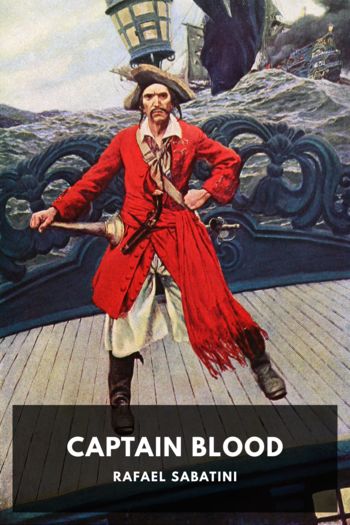Lemuria, Burt Clinchandhill [adventure books to read .TXT] 📗

- Author: Burt Clinchandhill
Book online «Lemuria, Burt Clinchandhill [adventure books to read .TXT] 📗». Author Burt Clinchandhill
“As if Scotty beamed them up,” Bishop smiled.
Lindsey grinned. She remembered Bishop as the movie buff who, in class, often answered questions with movie quotes. Most of the time, she had no idea what he was talking about, but this one even she understood. “Exactly,” she confirmed, “but in Peru, we visited the Mashco-Piro tribe. A nomadic, hunter-gatherers tribe living in the Mashco-Piro Indigenous Reserve. Over one hundred tribe members disappeared from satellite overnight. When we investigated the site, at first glance, everything looked the same as the other locations. Then, when we were about to leave, a native tribe member, dressed in only a loincloth, suddenly appeared from the woods and threatened me.”
“And almost killed you,” Ignatowski spoke fast. “It’s amazing you survived.”
Lindsey pouted her lips and shook her head. “Hell no. With you, everything is amazing. It was just a scared young man who was clearly traumatized. But anyway, nothing happened. The man kept his distance, and after a few minutes, we were able to gain some form of trust. Unfortunately, communication was difficult since we didn’t understand or speak his language. We didn’t have a translator. Anyway, somehow, we established a relationship, and after he finished a chocolate bar I gave him, he turned and slowly walked away from the camp. He kept looking behind him as if we were to follow him, so we did. After a five-mile hike through the rain forest, we arrived at what looked like a huge set of gray rocks leading to a cave underground. The man went inside and we, somewhat reluctant at first, decided to follow him. After a minute or so, finding our way through a narrow passageway, we could see light in the distance, and after fifty yards or so, we came into what looked like a room. Almost fifteen by fifteen feet square and ten feet high, it looked carved out by men. Every side had another passageway carved out of it. On the walls of the passageways were drawings that looked prehistorical, and in one corner on the floor, there were some animal skins. On the skins sat a young native-looking woman, no clothes. She was holding a baby. From the looks of it, she was the young man’s partner. He kneeled in front of her and put his arm around her and her baby. They spoke to each other. The language seemed rudimentary, sometimes more like prehistoric growling.”
“Wow, that’s quite a story.” Bishop faked an admiring voice. “But, I’m still wondering where you’re going with this and how I fit into this all?”
“I understand,” Lindsey replied. “We’re almost there. Whatever happened to the Mashco-Peru tribe, we figured the young couple and their baby were probably inside the cave when it happened. But we had no idea why. We decided to look around in the cave’s other passageways. I took my flashlight from my backpack, and when I lit it, the couple completely freaked out. They started screaming and waved their arms, making wild gestures. I immediately shut my flashlight off again. I raised it and showed it to them, trying to calm them down. And that worked. The man even got curious and took a good look at the flashlight from a short distance. So, after a short while, we tried again and investigated the passageways. Can you show him, please, Iggy?”
Ignatowski reached into his briefcase and took out a piece of paper with a drawing on it. He put it on the table and turned it to Bishop and Monroe.
“You recognize it?” Lindsey asked.
“Of course I do,” Bishop responded. “Stammbaum der Primaten, is part of Ernst Haeckel’s ‘Tree of Life,’ the top of it, to be precise. From his book Evolution of Man.” He turned the drawing back to Lindsey.
“Correct,” she replied. “All the passageways in the cave led to similar rooms from where we started. All precisely carved to the feet, it looked. All completely empty except for one. In one, we found what looked like an old wooden tabletop set upright against a wall. When we removed it, near the floor we found the Haeckel drawing written by finger, we suspect, in hard mud smeared on the wall.”
Monroe tilted his head and grunted.
“Is something wrong?” Lindsey asked.
Monroe shook his head. “No, never mind.”
“I think I understand.” Bishop nodded. “Haeckel, in some fields, was a brilliant man. However, by modern standards, he’s also often described as a racist, an anti-Semitic who is suspected of making contributions to Nazi biology. ‘Politics is applied biology,’ a famous Haeckel quote, is often used by Nazi propagandists.”
“Not a pleasant man,” Monroe added. “Haeckel claimed that Negroes’ toes were more flexible than those of any other race. He concluded that was evidence of Negroes being less evolved. He even called them—um, us—‘four-handed apes.’”
“True, and it was and is a disgrace,” Bishop confirmed. “Fortunately, the man is long dead.” Bishop paused for a short moment. “Now, I must admit, I’m intrigued about all this, but I still don’t know what it’s got to do with me?”
Ignatowski immediately leaned forward over the table. “Well, I’m afraid that at this moment, we cannot tell you all the specifics, but please, take another good look at the drawing.”
Bishop picked up the drawing and held it in front of himself and Monroe, who took his hand and pushed a bit further away.
“Forgot my glasses.” Monroe cocked his head.
“Better?” Bishop asked.
“Ah, yes, thank you,” Monroe confirmed. “And I also see something else. It’s wrong.”
“Yes,” Bishop said. “Indeed, it’s wrong. The drawing has the Pithecanthropus Alalus, and the Homo stupidus switched. Homo stupidus came after Pithecanthropus Alalus, so he should be on top.”
Ignatowski nodded. “Don’t you think





Comments (0)